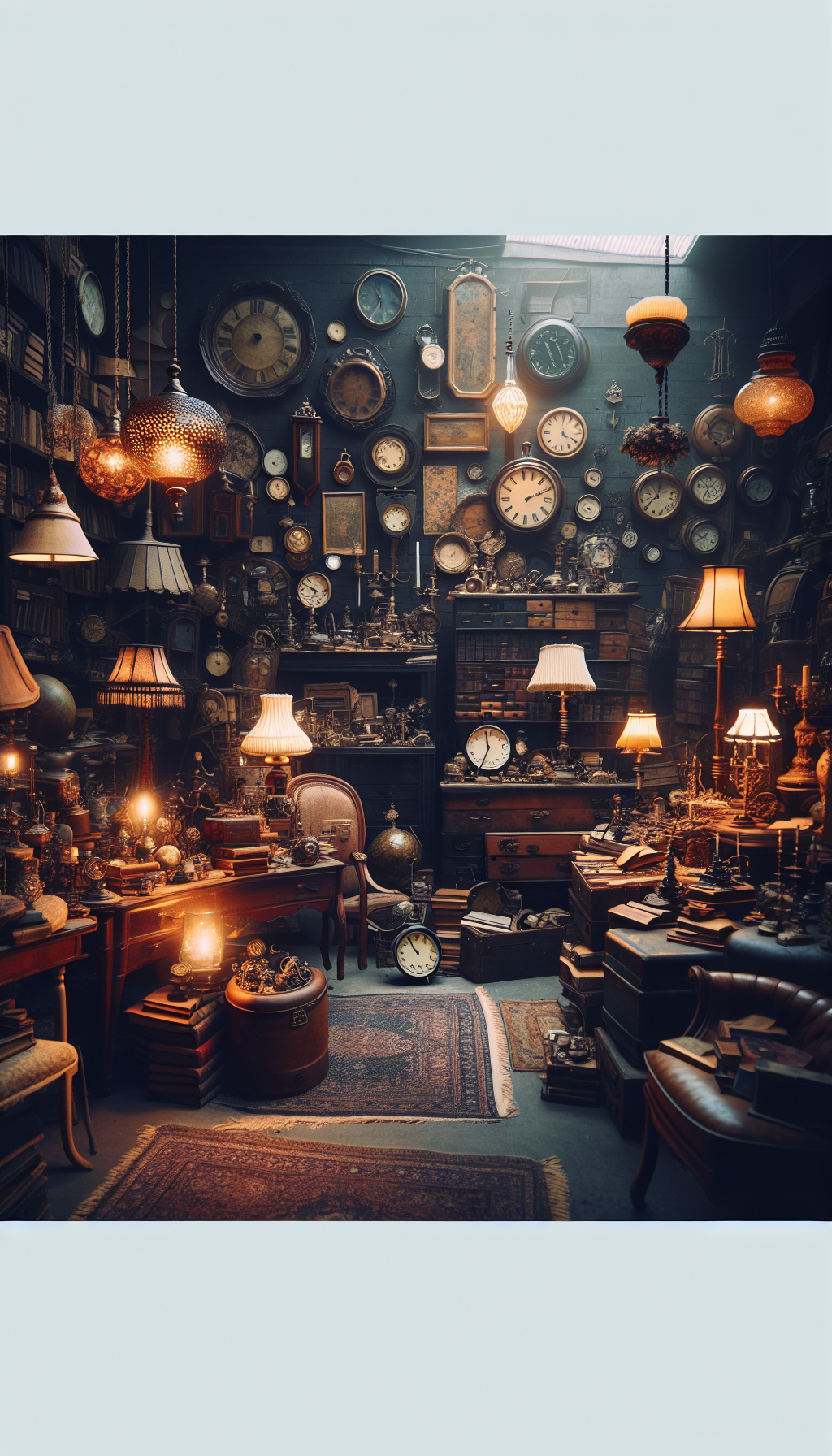Unlocking The True Value Of Artwork: Expert Insights On Appreciation And Investment Potential
For collectors, dealers, and appraisers, value is never a single number. It is a defensible range shaped by purpose, evidence, and market context. Whether you are stewarding family heirlooms, building a portfolio, or preparing an appraisal report, the key is to dissect value into its components and understand how each contributes to long‑term appreciation and investment potential.
This guide walks you through the standards of value used in art and antiques, the real drivers of price, how to build professional‑grade comparables, and the practical steps that reduce risk and improve outcomes when you buy or sell.
What “Value” Means In Art: Standards And Context
Before you price or purchase, specify the standard of value and the intended use. Different standards can produce very different conclusions for the same object.
Fair Market Value (FMV): The price at which the property would change hands between a willing buyer and willing seller, with neither under compulsion and both having reasonable knowledge of relevant facts. Used for estate, gift, charitable contribution, and equitable distribution. Typically reflects secondary market prices net of retail markups.
Retail Replacement Value (RRV): The cost to replace the item with a comparable piece in a reasonable amount of time in the relevant retail market. Used for insurance scheduling. Usually higher than FMV because it reflects dealer pricing and acquisition time.
Orderly Liquidation Value (OLV): Expected price when sold with adequate exposure time but under some time constraints (e.g., business dissolution). Lower than FMV.
Forced Liquidation/Salvage Value: Auctioned quickly under compulsion. Often significantly below FMV.
Marketable Cash Value (MCV): FMV minus the costs necessary to sell (commissions, fees, transport, conservation). Useful for net‑proceeds planning.
Aligning the standard with the purpose prevents costly mistakes—like insuring at FMV (risking undercoverage) or filing a donation at RRV (risking compliance issues).
The Core Drivers Of Value: Artist, Object, Evidence, Market
Price is rarely about one attribute. Strong appraisals and savvy acquisitions evaluate four dimensions.
- Artist factors
- Market tier: Blue‑chip artists with deep auction histories offer more predictable liquidity; mid‑career and emerging names carry higher dispersion of outcomes.
- Critical standing: Institutional exhibitions, inclusion in museum collections, and authoritative scholarship (including a catalogue raisonné) bolster demand and reduce authenticity risk.
- Supply dynamics: Late‑career scarcity, estates, and foundation control of archives influence release cadence and price pressure.
- Object-level factors
- Medium and technique: Oil on canvas often carries a premium over works on paper for the same artist; unique works typically command more than editioned prints; in sculpture, lifetime casts (with recognized foundry marks) outrank posthumous or unauthorized casts.
- Size and format: Larger works can bring higher absolute prices, but only within the artist’s desirable formats. Extremely large works can narrow the buyer pool due to display constraints.
- Date and period: Canonical periods, breakthrough years, or proximity to seminal series increase value; early student works or late workshop pieces may trail.
- Subject and iconography: Signature motifs, portraits of notable sitters, or series from widely published bodies of work outperform marginal subjects.
- Rarity and completeness: Unique variants, first states of prints in fine condition, original frames by the artist or period, and complete portfolios carry a premium.
- Signature and inscriptions: Autograph signatures, dedications, and period labels strengthen attribution, but suspicious or mismatched signatures are red flags.
- Condition and conservation: Original surface, vibrant pigments, minimal overpaint, and stable supports are critical. Overcleaning, aggressive relining, foxing, light staining, mat burn, or bronze disease can materially reduce value.
- Evidentiary factors
- Provenance: A continuous, well‑documented chain of ownership reduces title and authenticity risk. Museum or notable collection history adds cachet.
- Exhibition history: Inclusion in curated exhibitions, especially at recognized institutions, supports importance and demand.
- Literature references: Mentions in monographs, catalogues raisonnés, or peer‑reviewed publications validate significance.
- Authenticity documentation: Certificates from recognized experts, foundation opinions, and matching entries in the catalogue raisonné are powerful—unless later superseded by scholarship.
- Market context
- Comparables: The bedrock of valuation. Ideally same artist, medium, size, date/period, subject, and condition, sold through the same channel type within a recent window.
- Channel and geography: Private gallery sales vs. public auction, and regional markets vs. global hubs, affect exposure, fees, and price levels.
- Fees and net proceeds: Buyers pay premiums; sellers pay commissions and ancillary costs. Both sides’ economics influence achievable prices.
- Currency and timing: Exchange rates, auction seasons, and macro sentiment (e.g., risk‑on appetite) can shift outcomes.
Building Defensible Comparables And Adjustments
Professional‑grade comparables (“comps”) are specific, recent, and adjusted transparently.
Start with tight filters:
- Same artist and medium (oil vs. gouache vs. etching).
- Similar size and orientation; for works on paper, consider image size and margins.
- Closest period/series and related subject matter.
- Equivalent edition parameters for prints (edition size, state, printer/publisher, paper type, watermark, signature/numbering).
- Similar condition; read the full condition report, not just the headline.
Choose the right time window:
- Prefer sales within 12–36 months in normal markets. Extend the window judiciously for thinly traded artists or rare categories, noting market drift.
Normalize the prices you cite:
- Auction: Specify whether you use hammer or price including buyer’s premium. Many appraisals use the full price paid (hammer + buyer’s premium) for FMV; be consistent and state your convention.
- Private sales: Capture verifiable transacted prices, not asking prices.
- Adjust for currency to a common base on the sale date.
Make transparent adjustments:
- Size: Use area‑based scaling for similar works, but cap adjustments where larger size reduces marketability.
- Condition: Apply explicit discounts for issues (e.g., 10–30% for moderate fading or mat burn on a print; larger for structural restoration). Document why.
- Edition: Smaller edition size, earlier state, larger margins, and pristine condition justify premiums in printmaking. Trial proofs can be rare but may carry idiosyncratic demand—verify.
- Period/subject: Canonical series or iconic subjects merit premiums over peripheral subjects by the same artist.
- Provenance/exhibition/literature: Add premiums where there is meaningful, verifiable enhancement (e.g., museum deaccession, inclusion in major retrospective).
- Channel: Private retail comps may sit above public auction results; favor the channel relevant to your standard of value.
Treat outliers with caution:
- Record prices after bidding wars, charity sales, or works offered with irrevocable bids/third‑party guarantees may not represent repeatable levels. Flag them rather than anchor to them.
Document your sources and logic:
- In a USPAP‑compliant appraisal, cite each comp with full reference, explain each adjustment, and provide a reconciled value conclusion as a range with a most‑likely point.
Risk, Liquidity, And Costs: The Investment Reality
Art can appreciate meaningfully, but it is not a passive asset class. Returns depend on selection, holding period, timing, and costs.
Liquidity varies widely:
- Blue‑chip, well‑documented works by internationally collected artists are more liquid. Niche categories, large installations, or works with condition issues can take longer and sell at discounts.
- The right channel matters: top‑tier works merit major evening auctions or leading galleries; mid‑market material may perform better in day sales or regional houses.
Transaction and carrying costs:
- Buyer’s premium and seller’s commission, plus photography, cataloging, transport, storage, insurance, and conservation can total 20–35% round‑trip (or more).
- Taxes (sales/VAT, import/export) and compliance costs (CITES for materials like ivory, cultural property permits) reduce net returns.
Risk vectors to manage:
- Authenticity/title risk: Gaps in provenance, forged signatures, misattribution, or stolen art claims can destroy value and create legal exposure.
- Regulatory risk: Restrictions on export of cultural property, sanctions, and endangered‑materials laws can limit markets.
- Condition risk: Latent issues (e.g., unstable supports, light‑sensitive media) may emerge over time and require expensive treatment.
Correlation and expectations:
- Art markets have low immediate correlation with public equities but are cyclical and sentiment‑driven. After fees and costs, many collections underperform broad market indices unless the collector has access, expertise, and patience.
- A realistic approach treats art as a passion asset with potential upside, diversification benefits, and utility value (enjoyment), rather than a guaranteed financial investment.
Where Appreciation Often Hides: Underfollowed Corners And Tells
Consistent outperformance often comes from disciplined buying where quality is underrecognized.
Works on paper from major artists: Drawings, watercolors, and prints often lag paintings in price but lead in quality. Seek strong subject matter, fresh‑to‑market provenance, wide margins, and early/lifetime impressions.
Secondary subjects within canonical series: Iconic series produce anchor images that command premiums; adjacent, equally accomplished works sometimes lag in price but not in quality.
Early or late “bookend” periods: Pre‑breakthrough experiments and late syntheses can be undervalued if they foreshadow or crystallize key ideas.
Sculptural maquettes and lifetime casts: Well‑documented maquettes can be historically important; lifetime casts with reputable foundry marks stand above later, posthumous, or unnumbered casts.
Overlooked geographies and schools: Provincial ateliers, artist circles, or workshop pieces can offer quality and period authenticity at accessible prices—provided attributions and condition are solid.
Design and craft: Studio ceramics, mid‑century design, and fine craft by documented makers have matured into serious collecting categories with institutional support.
Exhibition and scholarship catalysts: Upcoming retrospectives, catalogue raisonné projects, or estate reorganizations often surface material and focus attention. Avoid speculating blindly; let evidence guide selection.
Red flags to avoid:
- Fabricated or circular provenance (e.g., dealer‑to‑dealer hops without primary sources).
- Overcleaned surfaces, heavy overpaint, or aggressive relining that obliterates texture.
- “Attributed to” or “circle of” language treated as autograph without matching price discipline.
- Unverifiable certificates or opinions from non‑recognized authorities.
Preparing To Buy Or Sell: A Practical Playbook
A little rigor before the transaction usually pays for itself.
Define your objective: Insurance scheduling, charitable donation, estate planning, portfolio pruning, or targeted collecting? The objective sets the standard of value and channel.
Assemble the file:
- High‑resolution images (front, back, details, signatures, labels).
- Measurements (image and sheet/canvas), materials, inscriptions, foundry marks.
- Provenance timeline with documents (invoices, letters, exhibition listings).
- Literature and exhibition citations; catalogue raisonné references.
- Prior appraisals and condition reports.
Commission the right expertise:
- Conservator for a condition report and treatment estimate.
- Appraiser familiar with the artist/category and current markets; ask for USPAP or IVS compliance.
Map the market:
- Identify appropriate selling venues (primary gallery, private sale, regional vs. international auction).
- Request presale estimates, commissions, and seller terms from multiple houses/dealers.
- Time sales to peak seasons and avoid crowded consignments that compete with your work.
Price with comps:
- Build a comp set with transparent adjustments and reconcile to a range aligned with your objective (FMV vs. RRV vs. net proceeds).
- Set reserves realistically if using auction; too high a reserve risks a buy‑in that stigmatizes the work.
Execute and document:
- Negotiate fees and enhanced marketing (catalog placement, specialist outreach).
- For purchases, include authenticity and title warranties where possible.
- Update your records post‑transaction (provenance, insurance values, condition notes).
Practical Checklist: Quick Appraisal And Investment Triage
- Identify the standard of value needed (FMV, RRV, OLV, MCV).
- Verify the artist attribution and check for catalogue raisonné inclusion.
- Inspect condition with a conservator; document all issues and prior restorations.
- Build 5–10 strong comps from the last 12–36 months; adjust transparently.
- Confirm provenance with documents; beware gaps and circular references.
- Check for exhibition and literature mentions that elevate significance.
- For prints/sculpture, verify edition size, state, and foundry/printer.
- Calculate total transaction costs and likely net proceeds.
- Choose the right selling or buying channel for the object’s tier.
- Stress‑test liquidity: how many buyers exist at your price level?
- Consider regulatory constraints (export, CITES, cultural property).
- Set a hold thesis: catalyst, time horizon, and risk factors.
- Document the file thoroughly for future appraisal and resale.
FAQ
Q: What is the difference between “signed,” “attributed to,” and “after”? A: “Signed” indicates the artist’s signature (verify authenticity). “Attributed to” suggests probable authorship without definitive proof. “After” denotes a work made in the style of or based on another work, not by the original artist. Prices and risks differ accordingly.
Q: How often should I reappraise my collection? A: For insurance, review values every 2–3 years or after major market moves. For estate or planning purposes, reassess when circumstances change (acquisitions, disposals) or at least every 3–5 years to keep documentation current.
Q: Do restorations always reduce value? A: Not always. Sensitive, documented conservation that stabilizes a work can preserve value. However, overpainting, excessive cleaning, or structural interventions (e.g., heavy relining) often reduce value, especially for top‑tier works. Disclose treatments and obtain a conservator’s report.
Q: Are prints good investments? A: Prints offer access to major artists at lower entry points and can appreciate, particularly early/lifetime impressions in excellent condition with small editions. They remain sensitive to condition, margins, paper quality, and edition integrity. Treat them with the same rigor as unique works.
Q: What documents matter most to buyers? A: A clear provenance chain with invoices, exhibition and literature citations, authenticity certificates from recognized authorities, condition reports, and accurate measurements and materials. Thorough documentation builds trust, supports price, and smooths resale.
By aligning standards of value with purpose, rigorously analyzing drivers and comps, and managing risk and costs, you position yourself to recognize true quality—and to capture appreciation potential without mistaking speculation for strategy.




